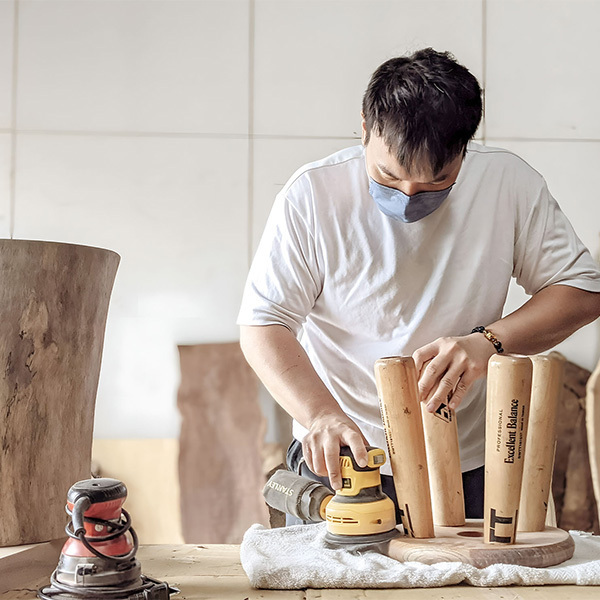Sea vegetable Circulation
SEA VEGETABLE COMPANY
HONOKA
Tatami mats, which have been used in Japanese living environment for centuries, are made from plants that are fragrant and have the ability to adjust humidity and reduce odors. The "TATAMI ReFAB PROJECT" is a project that re-embed Tatami into modern life using 3D printing technology. We designed furniture from a material made of recycled tatami with biodegradable plastic. We will continue to appeal the beauty of tatami to the next generation.
The inspiration came from discovering a large pile of discarded tatami mats in front of a tatami shop. Further investigation revealed a decline in demand for tatami and a lack of recycling methods, prompting the idea of preserving this beloved Japanese tradition. Tatami mats have various benefits, such as a rich aroma and odor control, but they are constrained by their fragility and vulnerability to water. To address this, we began developing a material by mixing them with resin to enhance moldability and waterproofing. We chose a base resin, cellulose acetate, with low environmental impact. The result is a project that creates furniture using a material made from igusa (rush grass) mixed with resin.
Programme Director of Helsinki Design Week & Weekly, Fiskars Village Art & Design Biennale, Luovi Productions Ltd
Love the realization and the dialogue between the old and the new! I could imagine TATAMI ReFAB PROJECT creating a meaningful bond for the product and the end user through the use of traditional references. The sense of familiarity might create engagement too. I’m happy to see the project fighting the global phenomena of the loss of dexterity and the decreasing use of traditional (local) craftsmanship through making use of these valuable skills and creativity in new contexts.
Faculty Chair and Former Vice President of Community and Impact, Singularity University
The project transforms a material again and again. First a plant is turned into a tatami mat. Then a tatami mat is turned into beautiful furniture and objects with the help of 3D printing. 3D printing will also allow anyone to design and create their own objects. The project is recycling goods as well as helping people see what a tatami mat can become, at a time when they are being replaced by less sustainable goods. The project leaders mentioned they hoped to connect the project to the original farmers. It might be possible to use a sensor and block chain technology to track the original materials over the course of their lifecycle. The farmers could see the different products other people create with the tatami over time and farmers could receive a financial compensation every time the tatami is turned into something new and (re)sold. Perhaps everyone who participated in the tatami's journey could be kept up to date and compensated. Over time an object's value increases the more times it is recycled through its life, creating an economy that incentives recycling.
Manager at the East Japan Railway Company in the Innovation Strategy Division, Digital Business Unit
Tatami mats are a fixture of the Japanese home and something that I as a Japanese person would like to preserve forever. However, tatami could eventually disappear due to falling demand and the disappearance of the craft. It’s difficult to create new demand for tatami, and there haven’t been enough good ideas in this area. This initiative is repurposing tatami for the current era and giving craftspeople a place to use their skills, which is hugely meaningful on both a cultural level and for the environment. What we call “tatami” actually has the potential to take many new forms, so I have high hopes for what this project can achieve next.
